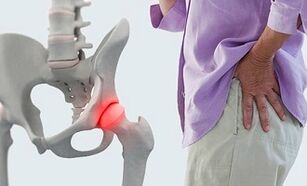
Our body is a complex system in which the breaking of one "screw" causes the failure of other "parts". In addition to diseases of internal organs, chronic diseases of the musculoskeletal system, especially the joints, also cause a lot of problems. Today I propose to discuss osteoarthritis of the hip joint. What are the symptoms and recommended treatments.
This joint is the largest in the human skeleton. It is constantly used when walking, bending, rotating, so the disease causes severe pain and stiffness in the patient. Fortunately, with early diagnosis, the disease is well treated with medication. But it is not so easy to suspect that something was wrong, you need to know all the features of the disease and be able to distinguish the first manifestations. And, of course, take care of the ways to prevent it, and our article will help you with that.
Osteoarthritis or osteoarthritis of the hip joint is also called coxarthrosis, all of these terms mean one thing: a complex progressive disease with destruction of the cartilage lining the femoral head and acetabulum. As a result, the joint gradually collapses, turns into bone, grows and loses mobility.
Coxarthrosis - what is it
Let's take a closer look at what coxarthrosis is, because it is the term that doctors often use due to the fact that recently the word "osteoarthritis" has been excluded from medical terminology because it was previously believed thatit had nothing to do with inflammation, but scientists later proved the opposite. For us, these arguments are not important, the main thing is that all these names refer to the same very unpleasant disease.
Thus, coxarthrosis is a degenerative-dystrophic disease which causes destruction and deformation of cartilage tissue. It is diagnosed mainly in women over 40 years old, and in men - 60 years old.
Why is it such an injustice that the ladies have done badly in front of nature? The point here is in the special structure of the female skeleton and the load on the hip joint, especially during childbirth and childbirth. As a result, it is middle-aged women who are more likely to suffer from this disease; in the older category, the number of patients of different sexes is gradually equalized.
Causes of osteoarthritis of the hip joint
The reasons for the development of osteoarthritis in the hip joint can be many.
The most common of these are:
- heredity, if the parents or one of the relatives had such a disease, you should be more attentive to your health, because although the disease itself is not related to genetics, a predisposition tometabolic disorders and other disturbances can lead to joint problems;
- heavy loads on the pelvis, especially in athletes who run, jump, lift weights;
- obesity, even a slight gain in weight can be negative for the joints, resulting in an increased load on them, therefore obese people are more prone to osteoarthritis;
- injuries, fractures, contusions of the pelvis;
- endocrine disorders such as diabetes can cause bone problems;
- inflammatory and infectious processes in the body, for example, purulent or rheumatoid arthritis;
- the presence of spinal or bone problems (flat feet, scoliosis, osteochondrosis) that change posture and stress on the joints;
- hormonal imbalance;
- weakening of blood circulation in the tissues;
- sedentary lifestyle;
- old age, which is associated with deterioration of tissue nutrition.
Degree of coxarthrosis
Doctors distinguish 3 degrees or stages of disease development, which will help distinguish the main symptoms. It is important to know that when diagnosing at stage 1, it is quite possible to completely cure the disease and forget about it for many years, and in the third stage the only correct decision will be an operation, otherwise thepatient is threatened with invalidity.
Step 1
The following symptoms will help to establish the presence of osteoarthritis in the hip joint of the 1st degree:
- pain upon heavy load on the joint and immediately after;
- localization of pain only in the area of the bone junction; The
- approach is not modified;
- no limping; The
- muscles retain their strength and shape.
During computer diagnostics, the doctor may notice bony growths on the surface of the joint, especially along the inner and outer edges of the acetabulum. At this stage, correctly selected drugs allow you to fully restore the working capacity of the joint, but not all of us tend to run to the doctor at the first manifestation of pain.
Admit it, a little discomfort often reminds you of stretching, dislocations, fatigue. We begin to rub the wound with various creams, ointments, we try to heal with folk methods, not understanding the cause and wasting precious time. Therefore, if you experience pain in your leg, the first thing you should do is go to the doctor, setting aside some time for yourself - this is the key to a long, fulfilling and happy life!
Step 2
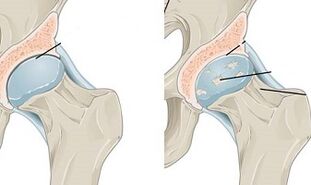
If the problem is not diagnosed and cured immediately, grade 2 osteoarthritis gradually develops, characterized by the following symptoms:
- more frequent pain that may appear even with inactivity;
- the pain is no longer limited to the bone connection area, it radiates to the thigh, groin, back;
- movements become limited, the person is unable to fully move their leg to the side;
- a limp appears.
On examination, the images show bony growths at the edges of the cavity, an increase in the apex of the bone, its displacement and destruction of the edge.
Fortunately, with the help of complex therapy, 2nd degree osteoarthritis can still be treated conservatively.
Step 3
Well, this is really bad for patients who have neglected their health so much that they have stage III osteoarthritis, this is typical:
- pain around the clock, even without physical exertion;
- the need to use crutches or walking sticks;
- atrophy, that is, shortening of the muscles in the diseased leg, change in posture.
During the examination, the doctor notices numerous bone growths, an increase in the size of the edge of the bone, a decrease in joint space. And here there is only one way out: this is an operation to replace an already unusable joint with a special artificial prosthesis.
Signs
We have already briefly mentioned the symptoms of the disease, it remains to summarize all these symptoms.
Coxarthrosis manifests itself:
- severe pain in the joint, which may later radiate to the leg, groin, knee;
- impaired movement, difficulty walking without support;
- shortening of the diseased limb;
- bad posture;
- decreased range of motion in the affected joint; The
- x-ray shows muscle atrophy;
- MRI shows soft tissue problems, inflammation;
- CT scans for the presence of bone growths.
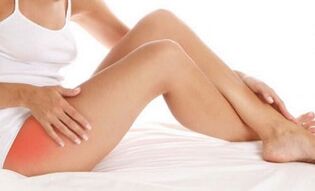
The symptoms are clear, but not that simple. Therefore, with any of these signs it is necessary to consult a specialist for diagnosis, since it can be both osteoarthritis and any other diseases with similar symptoms.
Diagnostics
Diagnosis of the disease should be made by more than one doctor, since pain in the pelvis can cause various conditions.
Like this:
- the therapist can find chronic diseases that cause discomfort in the hip;
- a neurologist excludes or confirms the presence of intervertebral hernias, they sometimes cause the same symptoms characteristic of osteoarthritis;
- urologist checks men for inflammation of the prostate, these conditions often cause pain in the pelvis, radiating to the legs;
- the gynecologist looks for adhesions in the patient, they are also similar in manifestation to this disease;
- a rheumatologist is a narrow specialist who deals with such problems, he will help determine the stage of the disease, its causes and methods of treatment;
- A surgeon and orthopedic surgeon will come in handy at an advanced stage when a patient needs an operation.
So, in order to make a correct diagnosis, it will not be possible to limit yourself to just one visit to the doctor, and in addition to this you still need to pass tests:
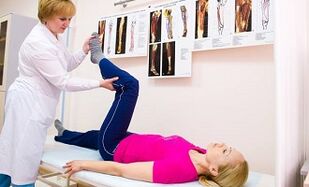
- clinical and biochemical analysis of urine and blood to detect inflammation in the body;
- MRI for soft tissue examination;
- CT for bone examination; X-rays
- will show bone damage; Arthroscopy
- is indicated in some cases;
- Sometimes an ultrasound of the pelvic organs is necessary.
The success of treatment depends on the correct diagnosis, the degree of impairment and the cause of the deformity. For example, if osteoarthritis caused tuberculosis of the bones, the usual treatment is prohibited, and in the case of metabolic disorders, it is necessary to first eliminate the root cause, and then treat its consequences.
Treatment of osteoarthritis of the hip joint
The most effective treatment is in the early stages, then you can limit yourself to various drugs. How to treat inflammation - the doctor decides after a series of studies. Treatment largely depends on the cause and degree of destruction, but most of all they try to relieve pain, remove inflammation, improve blood circulation, for this they use:
- nonsteroidal drugs to relieve inflammation;
- analgesics to restore the patient to a normal life and facilitate walking;
- muscle relaxants to restore blood circulation to the diseased area of the body; chondroprotectors
- , which help stop the deformation of cartilage tissue;
- steroid injections are used when the pain intensifies;
- medicines for vasodilation.
In addition to tablets, injections and ointments, treatment includes the use of a special diet and exercise therapy, a set of measures helps to significantly improve the condition and restore mobilityof the leg.
Surgery
If conservative treatment does not bring a visible result, or the disease was diagnosed at the last stage, there is only one way out - it is an operation. The procedure is complicated, in rare cases rejection or risk of thromboembolism and other fatal complications is possible. At the same time, for seriously ill patients this is the only chance to lead a normal life, because with an artificial joint, a person after healing and rehabilitation will be able to move calmly.
As with any operation, a patient with osteoarthritis must prepare for general anesthesia in advance, they are not allowed to eat or drink before the operation, and the bowels are cleaned. Then her legs are wrapped in elastic bandages to prevent edema, lying on her side and put to sleep. After that, the doctor makes an incision in the thigh, opens access to the joint, cuts the head of the femur bone and places a pin in the cut to which the titanium head is attached.
The damaged pelvic bone tissue is also removed and replaced with a polymer pad to allow normal movement of the legs in the future. Then the wound is sutured, a bandage is applied on top. After healing, a period of recovery always ensues, but in the absence of rejection, a person can walk for 20 years, or even all his life, calmly walking with an artificial joint, without feeling pain and stiffness.
Chondroprotectors
Due to the disease, the hip joint loses mobility, changes in the tissues, destruction of cartilage and the formation of bone growth in its place are observed. Fortunately, effective drugs have been invented to restore cartilage tissue, they are also called chondroprotectors, which in Latin means "protection of cartilage".
So what can these drugs do?
- stop the process of destruction of cartilage tissue;
- accelerate the metabolism in the joint;
- stimulate the production of synovial fluid, ie natural lubrication, which is normally produced in cartilage tissue and promotes easy sliding of the bone in the joint;
- relieve inflammation;
- facilitates movement of the joints.
Preparations may contain two main components: glucosamine and chondroitin.
As for the form of the medicine, it can be different, from tablets, capsules, ointments, creams to solution for injection. The choice of drug, dosage and duration of use should be prescribed by the attending physician, taking into account the characteristics of the organism. But, as a rule, injections are used during exacerbations, then the patient is transferred to milder treatment, which can last for months, at least six months. After all, restoring cartilage tissue is a long process, but it allows you to regain freedom of movement without surgery.
Injections
In some cases, treatment for the disease involves injections. Only a doctor should do them, resorting to such a solution only in extreme cases, since it is risky to treat the disease in this way. The fact is that the gap between the bones of the hip joint is small, and with coxarthrosis it narrows even more. As a result, sometimes even an experienced doctor cannot penetrate the joint capsule itself, and the risk of affecting the nerves and blood vessels is great.
At the same time, sometimes injections are the only way to relieve pain and inflammation; different drugs are used for these purposes:
- corticosteroids for pain relief, such injections should not be given more than once every two weeks and treatment for no more than 7;
- chondroprotectors help restore tissue, stimulate synovial fluid production for normal bone sliding, and improve tissue elasticity. In injection form, drugs work faster than tablets or ointments, allowing the drug to be delivered directly to its destination; Hyaluronic acid
- is the latest method to relieve inflammation and pain. It is used after all other drugs have been tried and did not achieve the desired result, the effect of its use is long-lasting, the injection is carried out once.
Physiotherapy
Unfortunately, in the fight against osteoarthritis of the hip joint, physiotherapeutic procedures are ineffective due to the deep litter of the affected area. However, sometimes doctors will prescribe physical therapy for pain relief.
Massage
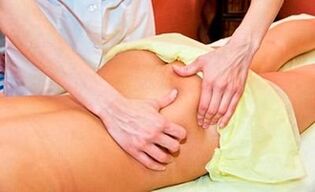
If medical massage is performed by a professional, it helps improve blood circulation in the joint, restore mobility and stop tissue destruction. But its use is indicated only during the period of remission, in the absence of pain.
In addition, to achieve a clear effect, you do not need single visits to a specialist, but courses two or three times a year to maintain the condition of bones and joints.
Treatment of hip osteoarthritis with folk remedies
Although it is quite difficult to completely cure coxarthrosis of the hip joint using folk remedies exclusively, especially in severe and advanced form, even doctors recognize the effectiveness of natural medicines. Many formulations based on herbs, roots and essential oils significantly alleviate the condition of the patient, stop the destruction of cartilage and the formation of bone and scar tissue, stimulate the production of synovial fluid, which isvery important in the fight against disease.
In order for the treatment to be most effective and give positive results, it is worth discussing with the doctor about alternative methods that can be used independently at home.
Some of the most popular tools:
- perestroot ointment. To prepare it, the root should be crushed in a coffee grinder, mixed with melted pork fat in a ratio of 2: 3, boiled over low heat for five minutes, cooled and lubricated with the composition of the sore spot in the eveningfor one month. Then rest for a week and continue the treatment;
- celandine ointment - dry 7 plants, separate the leaves from the stems and chop them, pour 1 cup of olive oil, leave in the cold for 14 days, after which the drug will become gelatinous, meltin the hands. Lubricate the diseased area with a substance every night;
- birch leaves, linden blossom, dry parsley, chop, steep instead of tea and drink every day;
- wash the lemon, chop it and pour 1 liter. boiling water, filter after a few hours, add honey, drink three times a day;
- combine honey, iodine, ethyl alcohol and glycerin in the same amount, insist 3-4 hours, lubricate the skin on the joint with a cotton swab 3 times a day;
- take 60 grams of saber and elecampane roots, mix with 0, 5 liters. vodka, insist for a day in a dark and cool place, strain, drink 25-30 drops three times a day 30 minutes before meals, you can also use it to rub.
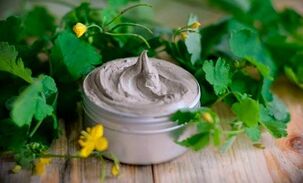
Exercises for coxarthrosis of the hip joint
Specially selected exercises will help to significantly improve the condition of coxarthrosis, some will be suggested by the doctor. Before using them, you should consult with your doctor, because with an incorrectly selected complex and the presence of contraindications, you can further harm your health.
For example, deforming osteoarthritis is dangerous to deal with with physical activity - it leads to even greater pain and tissue destruction.
TheGymnastics is also prohibited when:
- exacerbation of the disease;
- obvious pain on movement;
- increase in body temperature;
- exacerbation of chronic diseases;
- menstruation; hernia
- ;
- heart and lung disease in severe form.
It is believed that therapeutic exercises for hip osteoarthritis should aim to restore muscles and ligaments, but not load an already weak joint, therefore, non-dynamic, but static movements are better suited. I am also happy that the set of exercises can be performed at any convenient time, without spending money and nerves on trips to specialists, and given their effectiveness, it will simply be a crime not to use aalso universal medicine.
Here are some exercises:
- lying on your back, lift the affected leg 10-15cm, freezing for 20-30 seconds, repeat for the other leg;
- perform the same movement, but quickly, holding the legs only for 1 to 2 seconds;
- to lift not a straight leg, but a leg bent at the knee at a right angle;
- lying on your stomach, tear your legs off the floor and hold for a few seconds, slowly move to the sides, connect again, lower on the floor;
- lying on your side, bend the lower leg and lift the upper leg and hold it at an angle of about 45 degrees, wait 30 seconds, return to the starting position, repeat for the other leg;
- do the previous exercise, but at the same time turn the foot alternately outward and inward.
True, it is not recommended to train only on the description of exercises and videos, it is better to discuss this point with a doctor or even to consult a rehabilitation specialist several times, because in case ofdifferent type of disease, it is necessary to adjust the complex in order to avoid complications.
Nutrition
Since osteoarthritis is highly dependent on metabolism, it is important to adhere to adequate nutrition when treating the disease. It should be frequent, but not abundant. Excluded:
- salty foods;
- fatty broths, mayonnaise, oils, dairy products (sour cream, cream);
- preservatives;
- bakery products made from premium flour; smoked
- .

These should be replaced with more respectful cartilages:
- milk and low-fat milk products, in particular, cheese is very important because it promotes tissue regeneration and calcium absorption;
- lean fish and meat;
- beans, mushrooms, buckwheat, lentils rich in vegetable proteins;
- meat in jelly, fish in jelly, jellies, which contain collagen;
- carbohydrates from cereals;
- vegetables, fruits;
- complex carbohydrates (dried fruits, honey).
Drinking plenty of fluids is important for maintaining salt balance.
Good nutrition helps to remove uric acid, which is dangerous for the joints, relieve inflammation, remove excess weight, edema and thus reduce the load on the diseased area and even restorecartilage tissue. The greatest effect can be obtained in stage 1 of the disease.
Prevention
If there are cases of disease in the family or if osteoarthritis of the hip joint has already been present and has been successfully treated, correct and regular prevention is important, which includes the following points:
- good nutrition, which contains all the vitamins and minerals necessary for normal tissue metabolism; Weight control
- to avoid additional loads;
- Moderation of physical activity, ability to move around in such a way as to avoid injury and excessive strain on diseased joints;
- beware of hypothermia, as it can make it worse. It is important to dress warmly, to wrap the pelvis in cold weather, to avoid sitting on cold surfaces and to stay in a draft;
- lead a healthy lifestyle, walk in the fresh air, gently strengthen the muscles of the legs.
Osteoarthritis is a very unpleasant disease which, without proper treatment, with bone fusion ends in disability and life in a wheelchair. Therefore, at the first symptoms, consult the doctor for diagnosis and help. Timely and comprehensive treatment allows you to get rid of the problem and live pain-free and without limits.























